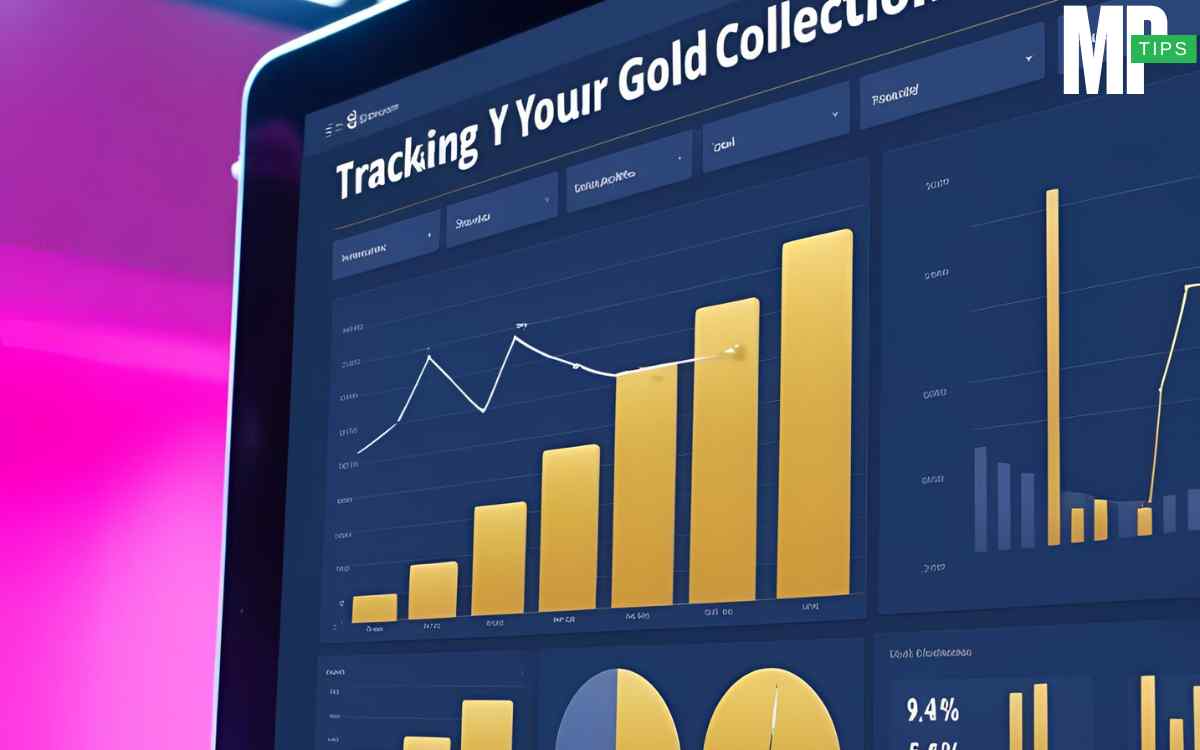How to Keep Track of Your Gold Collection Like a Pro?
Use a dedicated inventory app or spreadsheet to log details like weight, purity, purchase date, and storage location to manage your gold collection efficiently and securely.
Gold has always symbolized wealth and prestige. Whether you’ve inherited a family heirloom, invested in bullion, or splurged on exquisite jewelry, keeping track of your gold collection is no small feat.
Many collectors underestimate the importance of meticulous record-keeping until they face issues like loss, theft, or inaccurate valuations.
Have you ever struggled to recall where a particular piece came from or its current market value? You’re not alone.
The world of gold collecting is filled with nuances. Without a solid system, things can quickly get chaotic.
From fluctuating market prices to ensuring proper storage, there’s a lot to juggle. The key is to manage your collection like a pro—systematically, securely, and smartly.
This guide will walk you through the best practices, tools, and tips to keep your precious assets in order.
Use a dedicated inventory app or spreadsheet to log details like weight, purity, purchase date, and storage location to manage your gold collection efficiently and securely.
Contents
- 1 Key Takeaways
- 2 Gold Collection Data Chart
- 3 Understanding the Value of Your Gold Collection
- 4 Types of Gold Items to Track
- 5 Keeping Up with Gold Purity and Weight
- 6 Essential Tools for Gold Collection Management
- 7 Creating a Detailed Gold Inventory
- 8 Organizing Your Gold Storage
- 9 Digital Recordkeeping and Backup
- 10 Author
Key Takeaways
Gold Collection Data Chart
| Item | Weight (grams) | Purity (Karat) | Type | Purchase Date | Current Location | Estimated Value (USD) |
|---|---|---|---|---|---|---|
| Gold Ring | 10 | 22K | Jewelry | 2023-06-15 | Bank Locker | $700 |
| Gold Coin | 20 | 24K | Investment | 2024-01-10 | Home Safe | $1,400 |
| Gold Chain | 25 | 22K | Jewelry | 2022-12-05 | Bank Locker | $1,750 |
| Gold Bar | 50 | 24K | Bullion | 2021-08-20 | Private Vault | $3,500 |

Understanding the Value of Your Gold Collection
Valuing your gold collection isn’t just about knowing how much you paid for it.
It’s about understanding its current worth, which can fluctuate based on global market trends, purity levels, and even historical significance.
Imagine you own a rare gold coin from the 1800s—its value could skyrocket not just because of its gold content but also due to its rarity and demand among collectors.
Market prices for gold change daily.
A collection valued at $10,000 today could be worth significantly more—or less—in a few months.
This dynamic nature makes it essential to stay informed and regularly reassess your collection’s worth.
Another critical aspect is the emotional or historical value attached to certain pieces.
For instance, a gold necklace passed down through generations holds sentimental value that goes beyond its market price.
Recognizing and documenting this can add depth to your collection records.
By staying informed about gold prices, understanding the different valuation factors, and maintaining updated records, you’ll always have a clear picture of your collection’s true value.
Types of Gold Items to Track
Not all gold items are created equal.
Your collection might include a variety of pieces, each with unique tracking requirements:
Jewelry
From rings to bangles, gold jewelry is often worn and thus more prone to wear and tear. Keeping track of purchase receipts, karat ratings, and even repair history is essential.
Coins and Bullion
Investment-grade gold like bullion bars and coins require precise documentation. You’ll want to note weight, purity, minting details, and serial numbers.
Antiques and Heirlooms
These pieces may have artistic or historical significance. Documenting provenance (history of ownership), appraisals, and certifications can enhance their value.

Investment-Grade Gold
This includes gold bought specifically for financial investment, such as ETFs backed by physical gold. While you may not hold these physically, tracking their performance is still crucial.
Segmenting your collection into these categories helps streamline tracking and ensures you cover all necessary details for each type.
Keeping Up with Gold Purity and Weight
Gold purity is measured in karats, with 24 karats representing pure gold.
However, pure gold is often too soft for practical use, which is why it’s alloyed with other metals.
Understanding these differences is vital when assessing your collection.
For instance, an 18K gold bracelet contains 75% gold, while a 14K ring has only 58.3%.
Knowing the purity level helps you accurately calculate the item’s gold content and thus its market value.
Weighing your gold accurately is another essential step. A small discrepancy in weight can lead to significant valuation errors.
Investing in a high-precision digital scale designed for precious metals ensures you get accurate readings.
Additionally, consider using gold testing kits to verify purity.
These kits use acid tests or electronic testers to confirm if your gold matches its stated karat rating.
While professional appraisals are always recommended for high-value items, these DIY methods can be handy for initial assessments.
Essential Tools for Gold Collection Management
To manage your gold collection efficiently, you’ll need the right tools. Let’s break it down:
Digital Scales and Testing Kits
A reliable digital scale ensures you can measure your gold items accurately. Opt for scales with a precision of at least 0.01 grams.
Testing kits, including acid tests and electronic testers, help verify gold purity, especially useful for new acquisitions.
Mobile Apps for Collectors
There are several apps designed specifically for gold collectors.
These apps allow you to catalog your items, track market prices, and even get real-time valuation updates. Popular choices include “Mintage” and “Gold Tracker Pro.”
Spreadsheets vs. Dedicated Software
For small collections, a well-organized spreadsheet might suffice.
Include columns for item descriptions, weight, purity, purchase details, and current value.
However, for larger or more valuable collections, dedicated software like “CoinManage Gold” or “BullionVault” offers more advanced features like automated market updates, image uploads, and insurance tracking.
Using these tools not only simplifies management but also provides a clear, organized view of your entire collection at a glance.
Creating a Detailed Gold Inventory
A detailed inventory is the cornerstone of effective gold collection management.
Think of it as your collection’s passport—each item should have a complete profile that tells its story and validates its worth.
But what exactly should go into this inventory?
Key Details to Record
Start with the basics:
- Item Description: Specify what the item is—a ring, coin, bar, necklace, etc.
- Weight: Accurately recorded in grams or ounces.
- Purity: Document the karat or fineness.
- Source: Where and from whom you acquired it.
- Purchase Date and Price: Crucial for tracking value changes.
- Current Estimated Value: Based on the latest market rates.
Photographic Records
A picture is worth a thousand words, especially when it comes to valuable items.
High-quality images from multiple angles can help in identification, insurance claims, and resale scenarios.
Don’t forget to include close-ups of any unique markings or engravings.
Certificates and Documentation
If your item comes with a certificate of authenticity or appraisal report, scan and store digital copies alongside your inventory records.
These documents add credibility and can significantly influence resale value.
Organizing the Inventory
For smaller collections, a detailed spreadsheet might do the trick.
For larger, diverse collections, consider database software that allows for categorization, tagging, and easy searchability.
Organize your inventory by item type, purchase year, or even sentimental value categories.
By maintaining a thorough, well-organized inventory, you not only streamline management but also ensure you’re always prepared for appraisals, insurance assessments, or potential sales.
Organizing Your Gold Storage
Proper storage isn’t just about stashing your gold in a safe place; it’s about ensuring its safety, accessibility, and preservation over time.
Safe Deposit Boxes vs. Home Safes
A safe deposit box in a bank offers high security but limited access during banking hours.
This option is ideal for long-term storage of items you don’t need to access frequently.
On the other hand, a home safe provides immediate access but requires investment in high-grade security measures to deter theft.
Best Practices for Home Storage
If you opt for home storage, ensure your safe is:
- Fireproof and Waterproof: To protect against natural disasters.
- Bolted Down: Prevents thieves from carrying it away.
- Discreetly Placed: Avoid obvious locations like bedrooms or living rooms.
Insuring Your Collection
Insurance is a must, even for small collections. Look for specialized policies that cover theft, loss, and damage.
Ensure your policy reflects the current market value of your collection, and update it regularly as your collection grows or values fluctuate.
Proper storage and insurance not only protect your assets but also provide peace of mind, knowing that your valuable collection is safe and accounted for.
Digital Recordkeeping and Backup
In today’s digital age, relying solely on physical records is risky. Fires, floods, or simple human error can wipe out years of data.
That’s why a robust digital recordkeeping system is essential.
Cloud Storage Solutions
Services like Google Drive, Dropbox, and OneDrive offer secure, accessible storage for your inventory records, photos, and certificates.
Ensure you organize your folders clearly and maintain consistent file naming conventions for easy retrieval.
Protecting Sensitive Data
Given the sensitive nature of your collection data, prioritize security:
- Use strong, unique passwords.
- Enable two-factor authentication.
- Regularly update security software on all devices accessing your records.
Offline Backups
Besides cloud storage, maintain offline backups on external hard drives or USB sticks. Store these backups in separate, secure locations to safeguard against simultaneous loss.
A well-rounded digital recordkeeping strategy not only secures your data but also simplifies sharing information with appraisers, insurers, or potential buyers.






